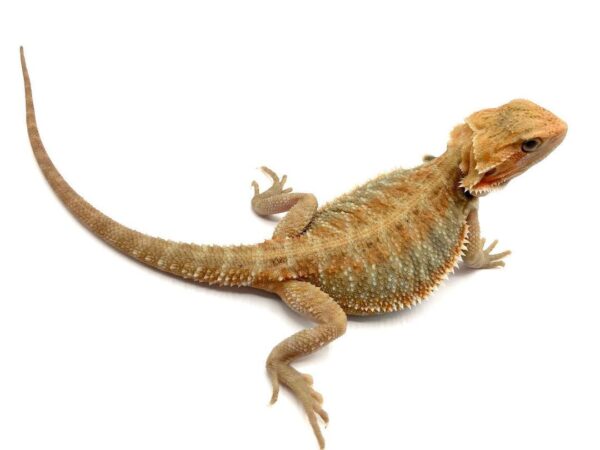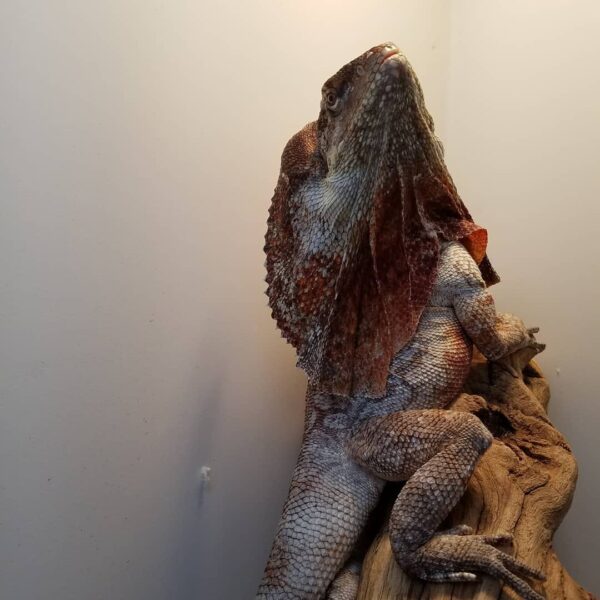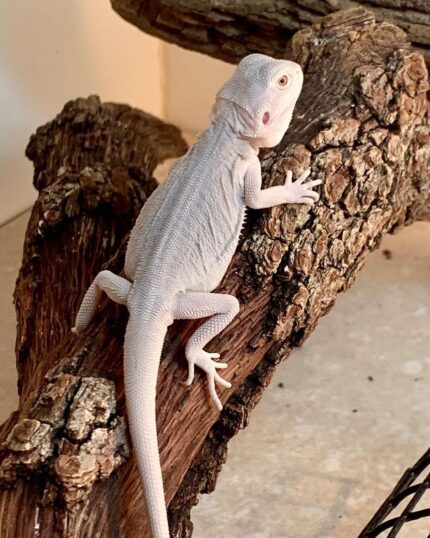Bearded dragon Popular as pets, bearded dragons or “beardies” are moderately sized lizards native to Australia. Our captive bred baby bearded dragon for sale are some of the nicest bearded dragons for sale in the country. Working with top bearded dragon morphs, we are proud to offer a wide variety of bearded dragon color morphs for sale at the best prices anywhere in the USA.
About bearded dragons
The bearded dragon lives up to its name: Like a dragon, it’s equipped with armor of spiny reptilian scales, which include a “beard” of spikes under its chin that puffs up depending on its mood. There are eight species species of bearded dragons recognized today, all of which are affectionately called “beardies.”
Among the most popular pet reptiles, bearded dragons tend to be gentle, inquisitive, and active during the day. The central bearded dragon, Pogona vitticeps, is the most common species to have as a pet.
Habitat
In the wild, bearded dragons’ range extends across most of Australia. They typically prefer to stick to warm, arid areas: deserts, subtropical woodlands, savannas, and scrublands. In the 1960s, Australia banned the export of wild bearded dragons; however, they’ve been bred in the United States for decades for the pet trade, and they come in a variety of color “morphs” not commonly found in the wild.
A warm habitat is crucial for bearded dragons. They’re cold-blooded and rely on external heat sources to raise their body temperature, which varies according to the temperature of their environment. They bask in the sun to warm themselves and can burrow underground to avoid extreme heat and predators.
They’re semi-arboreal and often can be found on fence posts and tree branches.
Diet
Bearded dragons are not picky eaters. With their strong jaws, they can clench and crush hard-shelled insects like beetles. As omnivores, they’ll also go for leaves, flowers, fruit, and the occasional small lizard or rodent.
Behavior
Known for being territorial, adult bearded dragons may display their aggression to defend their turf from other males, fight for food, or compete for a female. Some males may also attack females if they don’t show submissive behavior.
The beard, which both males and females have, is an important way the lizards communicate. When threatened, a bearded dragon will open its mouth, raise its chin, and puff out its beard to make itself appear bigger. This display may also be accompanied by a hiss.
Bearded dragons also communicate by changing the color of their beards and bobbing their heads. A quick head bob may signal dominance, whereas a slow bob and an arm wave is a sign of submission.
With a change of seasons, some bearded dragons may go through brumation, a type of hibernation, in which they stop eating and only drink water sporadically. This dormant phase usually occurs in the fall or winter as the light changes and temperatures drop.
Courtship and breeding
To catch the attention of a female, a male bearded dragon embarks on a showy ritual of courtship, pounding his feet into the ground and waving his arms and bobbing his head. The male will pursue the female and bite the back of her neck when mating.
Female bearded dragons are believed to have the unusual capacity to store sperm, which enables some to lay two separate clutches of 11 to 30 eggs from a single mating.
The sex of bearded dragon embryos can be changed by the incubation temperature. If the temperature is unusually high while embryos with male chromosomes are developing, they will instead develop as females. Warmer temperatures during development also make bearded dragons slower learners.














Reviews
There are no reviews yet.